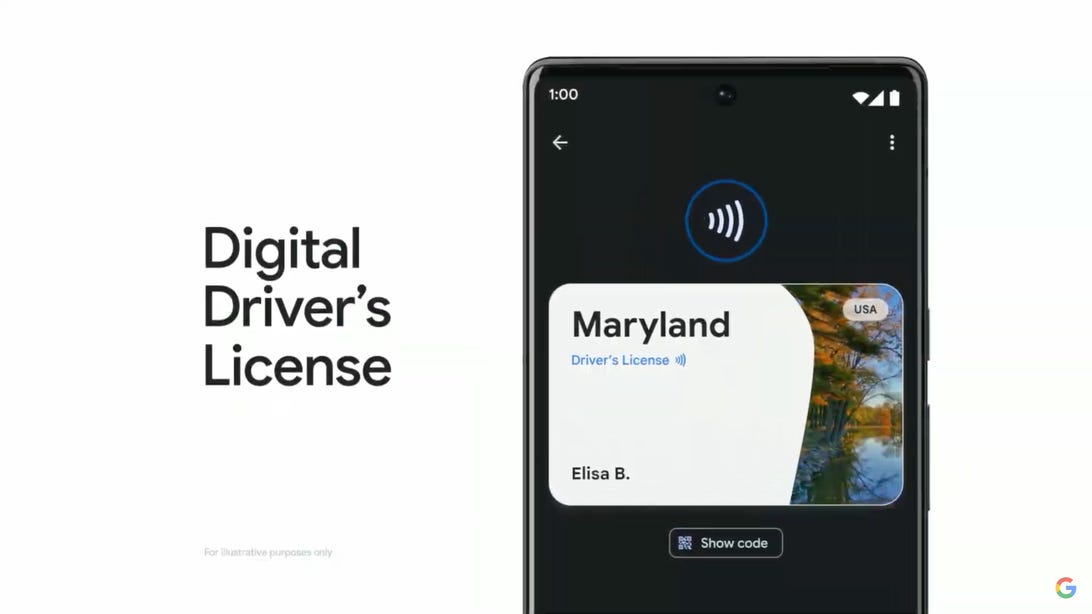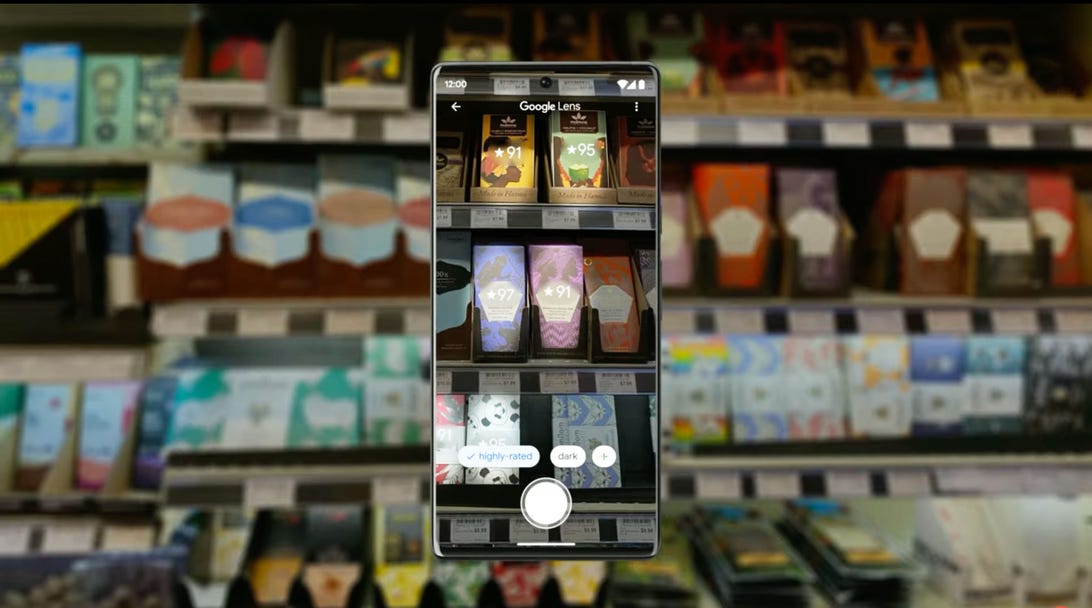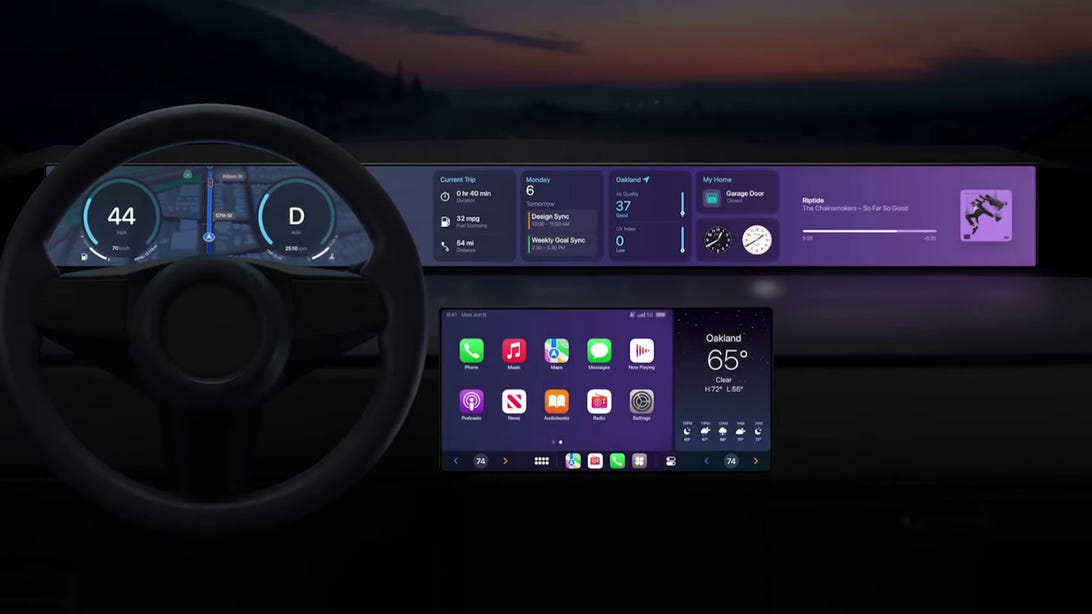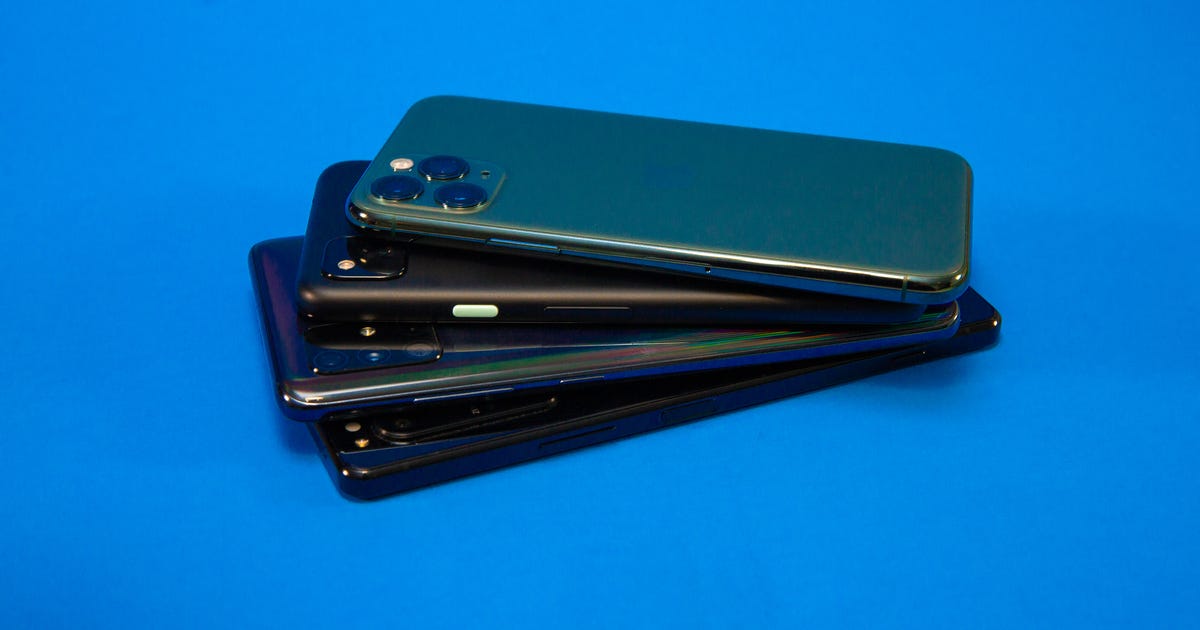What iOS 16 and Android 13 Tell Us About the Future of Smartphones
This story is part of WWDC 2022, CNET’s complete coverage from and about Apple’s annual developers conference.
What’s happening
iOS 16 and Android 13 both come with new features that aim to replace your physical wallet and improve connections with smart home gadgets and connected car interfaces.
Why it matters
The updates underscore Apple’s and Google’s shared vision to make our phones more essential in everyday life.
Your iPhone or Android phone is about to become even more tightly woven into the nondigital aspects of your life. That’s one of the main takeaways from iOS 16 and Android 13, the latest mobile software updates from Apple and Google, coming later this year. Both tech giants want to turn your phone into an electronic wallet for storing your legal ID, pushing your phone closer to your identity than ever before. The companies also continue to improve the way phones communicate with cars, smart home gadgets and other everyday devices.
Both iOS 16 and Android 13 are filled with tweaks and new features, some of which are more important than digital wallets and speedier connections (like Apple’s Safety Check tool for protecting domestic abuse victims, and Google’s new privacy updates). But the overlap between the two operating systems underscores the phone’s changing role in our lives. Based on Apple’s and Google’s latest announcements, what’s happening around your phone will be just as important as what’s happening on your phone.
The more intimately our phones are tied to daily essentials like wallets, credit cards, cars and home appliances, the harder it’s going to be to move away from them (or switch between iPhone and Android). The concept isn’t new; the industry has moved in this direction for years. But the changes in iOS 16 and Android 13 bring important refinements to Apple’s and Google’s respective approaches that will likely accelerate such efforts.
Read more: iOS 16’s Lock Screen Upgrades Make the iPhone More Like a Smartwatch
Replacing the physical wallet

Google is adding digital driver’s licenses to Google Wallet.
Google; screenshot by CNET
The digital wallet was a big focus during both Apple’s iOS 16 announcement and Google’s Android 13 preview. The most significant change coming to Apple Pay is a new option called Apple Pay Later, which splits the cost of a purchase into four equal installments over six weeks. With iOS 16, identification cards stored in Apple Wallet can also be used to verify your age within apps. The addition comes after Apple first added support for digital IDs last year.
Google, meanwhile, detailed a major revamp to its Wallet app during its I/O conference last month that brings it up to speed with Apple. The new Google Wallet will store personal documents like payment and transit cards, vaccination records, boarding passes and student IDs, much like Apple Wallet. Google is also working with government agencies to support digital IDs.
Taken together, Apple’s and Google’s updates represent another step toward their common objective of making physical wallets obsolete — a shift that’ll inevitably make us even more reliant on mobile devices.
Google reiterated this ambition just before detailing the new updates at Google I/O in May.
“In fact, these days there are only two things I don’t leave home without: my phone and my wallet,” Sameer Samat, Android and Google Play’s vice president of product management, said on stage. “So the question is, can my phone replace my wallet?”
Corey Fugman, Apple’s senior director for Wallet and Apple Pay, made similar remarks during the WWDC keynote on Monday.
“With Apple Wallet, we’re working hard on our goal to replace your physical wallet,” he said.
People have already embraced the idea of replacing physical credit cards with smartphone-based payment apps. Usage of in-store mobile payment systems like Apple Pay is expected to surpass 50% of all smartphone users in the US by 2025, according to a 2021 report from eMarketer. Apple’s new Pay Later option and Google’s renewed focus on its own mobile wallet could make the notion of leaving your physical wallet at home even more appealing.
Read more: What WatchOS 9 May Reveal About the Next Apple Watch
Your phone, everywhere

Google’s new visual search tool details products on a busy store shelf.
Screenshot by Stephen Shankland/CNET
Replacing the wallet is only one way Apple and Google hope to make our phones more useful offline in everyday life. Both companies also introduced camera-based smartphone tools that could make navigating real-world points of interest easier. Another prominent theme is the increased interconnectivity between mobile devices and home appliances, cars and speakers.
Apple and Google both believe the camera will continue to play a big role in how we interact with the world around us. In iOS 16, you’ll be able to translate text into different languages using a new camera option in Apple’s Translate app. During its WWDC keynote presentation, the company demonstrated how this could be used to translate an entire restaurant menu into a different language. You’ll also be able to track a flight or convert currency just by tapping on text in a photo.
Google showed off an ambitious expansion of its Lens app called “scene explorer” at Google I/O, which essentially applies its search prowess to the real world. You’d wave your phone’s camera across a shelf of products, and it would overlay information and ratings on screen to help you find the right pick. Google search head Prabhakar Raghavan cited the ability to find nut-free snacks or scent-free lotion at a physical retail store as an example.
The execution may be different, but the concept is similar. We’re already accustomed to ordering food, taxis and household essentials with the press of a button on our phones. Now Apple and Google want to make our phones a critical part of accomplishing those tasks in the real world too, and the camera will be a major part of that.
Google and Apple have also refined their respective visions for turning our phone into a connection hub for other appliances around us. Google explained how Android 13 would make your phone better at connecting to other devices with support for fast pairing, automatic audio switching between devices, and the ability to more easily sync messages between your phone and computer. It also revealed a new split-screen interface for Android Auto that should make multitasking easier when you’re on the road.
Read more: A New Apple Watch SE Sounds More Exciting Than the Series 8. Here’s Why

Apple’s new iOS-inspired CarPlay interface.
Apple
Apple simplified the process of managing HomeKit devices with a redesigned home app for the iPhone. But perhaps the biggest area where Apple plans to broaden the iPhone’s reach is in the car. The company teased a revamp of its CarPlay software that looks like an entire operating system for automobiles, complete with app icons, widgets and other user interface elements that are reminiscent of the iPhone and Apple Watch.
The smart home and connected car aren’t new ideas. They’ve both been an integral part of Apple and Google’s respective strategies for years. But iOS 16 and Android 13 clarify how Apple’s and Google’s visions for these devices should communicate and interact.
As the smartphone becomes the link to everything from your credit card to your thermostat and car, Apple and Google are making its aesthetic more personal. When iOS 16 launches this fall, your iPhone will get a brand-new lock screen with support for Apple Watch-esque widgets and new photo effects for background images. Google is expanding its Material You with premade color sets that can be applied across the entire operating system.
There’s a lot more to iOS 16 and Android 13 than new wallet functionality, camera tools for scanning real-world objects and improved connectivity. These updates not only signal how essential the phone is becoming to both our online and offline lives, they also point to where the industry is heading next.
For all the latest world News Click Here

